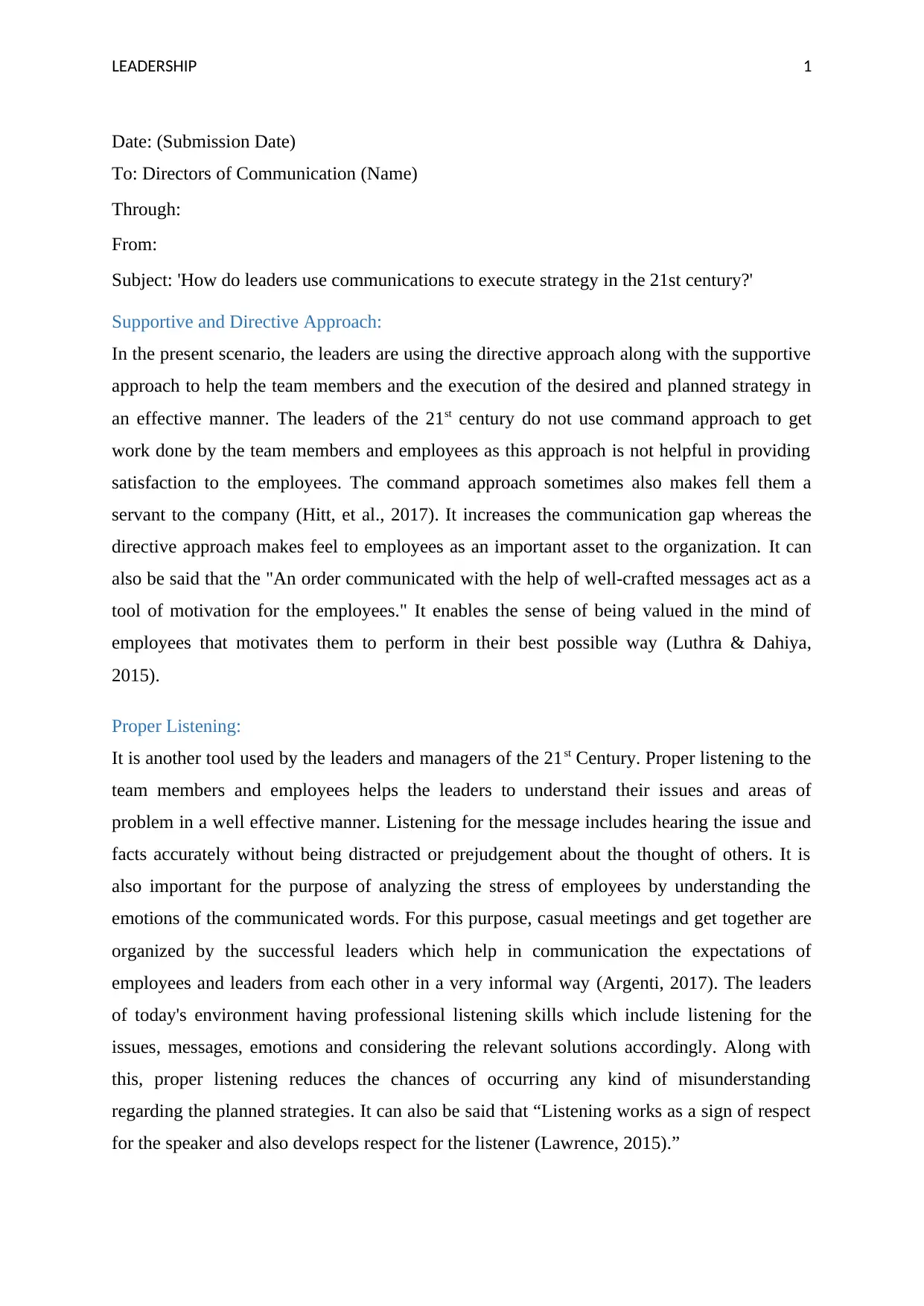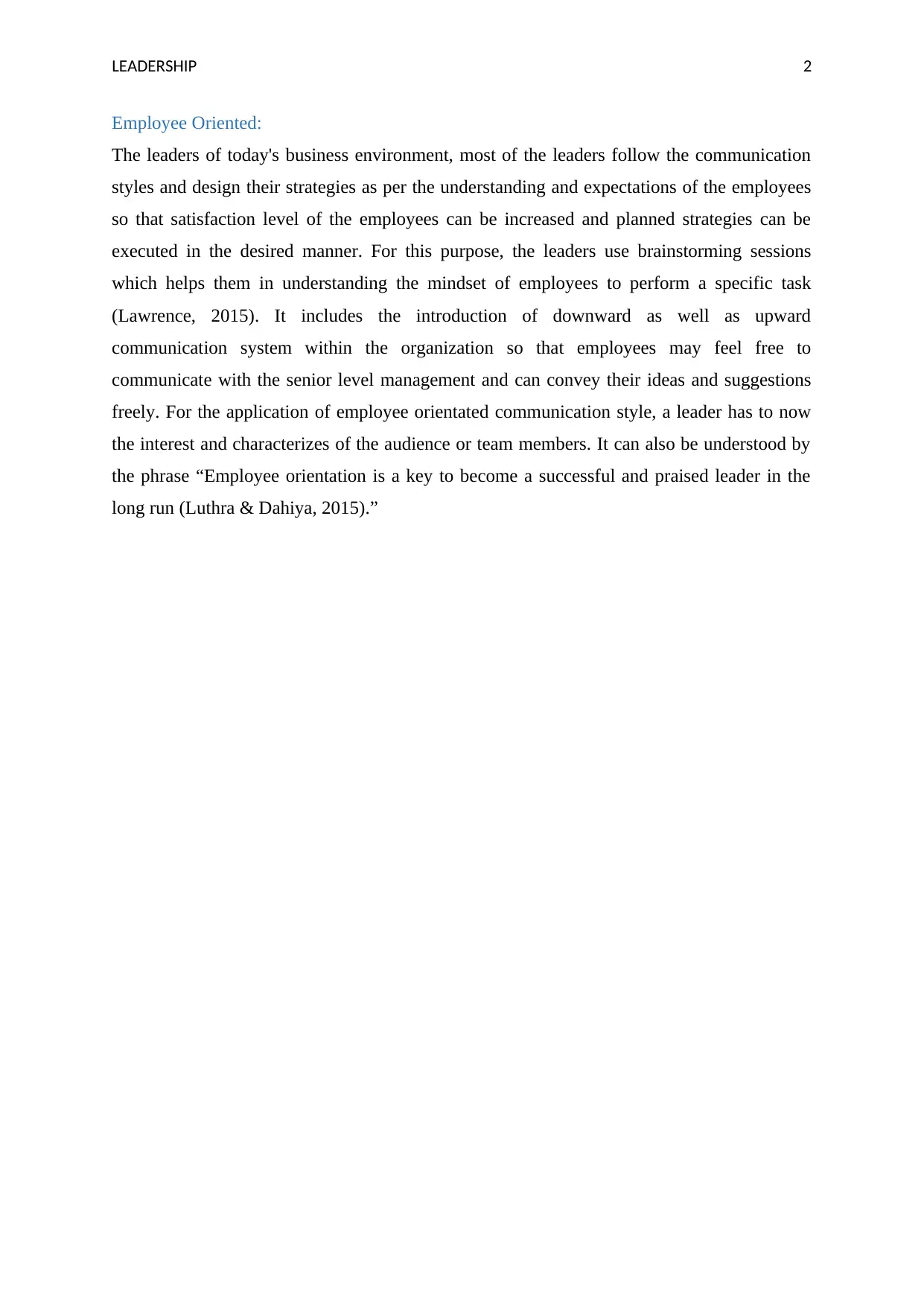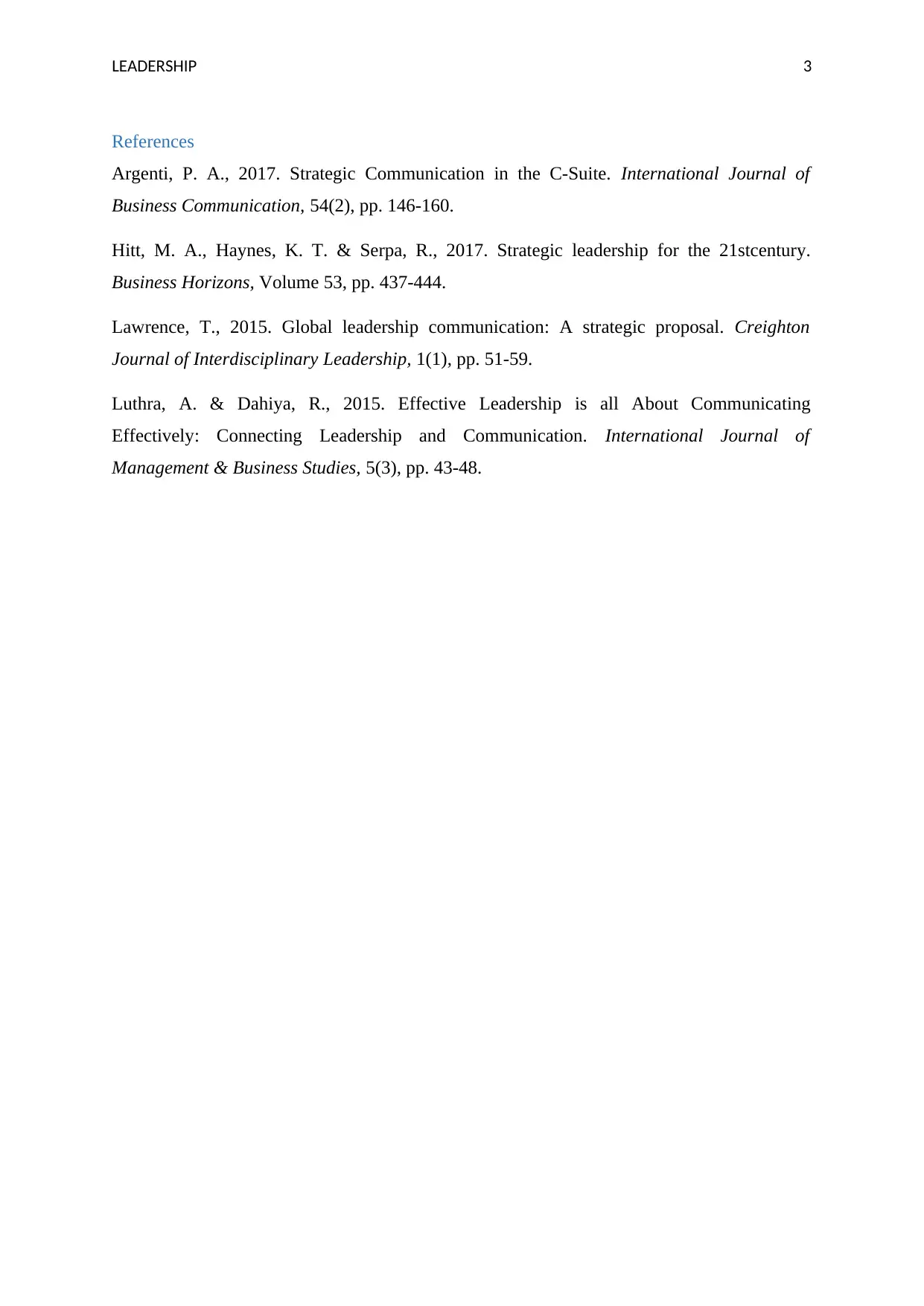MNG81001 - Leadership Communication: Strategy Execution in the 21st
VerifiedAdded on 2023/06/09
|4
|736
|469
Report
AI Summary
This report examines how leaders leverage communication to execute strategies in the 21st century. It emphasizes the shift from command-based approaches to more supportive and directive methods that value employee input. Effective leaders prioritize active listening to understand employee concerns and foster open communication through informal meetings. Employee-oriented communication styles, incorporating upward and downward communication, are crucial for enhancing employee satisfaction and strategy implementation. The report references academic and industry journals to support its findings, highlighting the importance of adapting communication strategies to meet employee expectations and achieve organizational goals. Desklib provides a platform for students to access similar solved assignments and past papers for further study.
1 out of 4









![[object Object]](/_next/static/media/star-bottom.7253800d.svg)